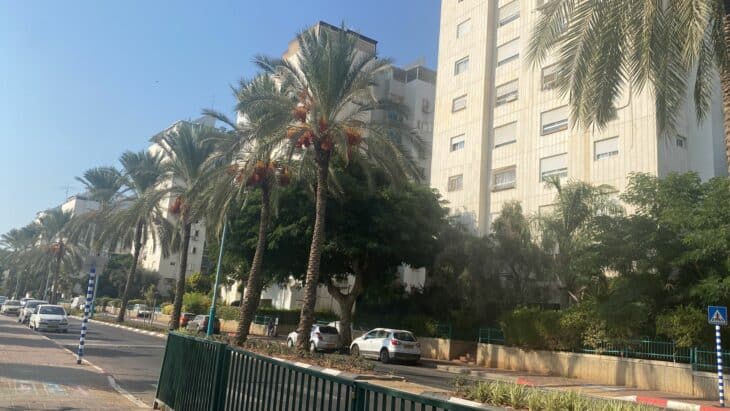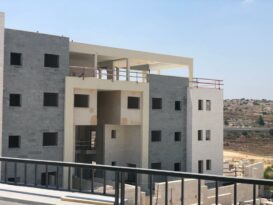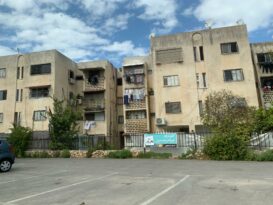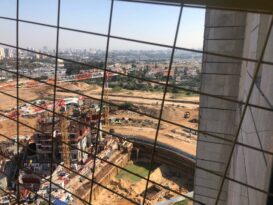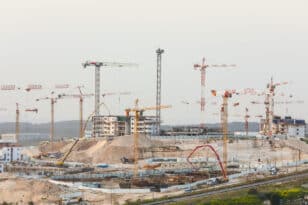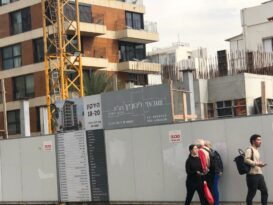It is hard to believe that after the riots of May 2021 the city of Lod is enjoying an unprecedented construction boom. Two huge neighborhoods totaling 16,000 apartments are being built which are expected to change the character of the city, with affordable housing prices that will attract new populations. Will Lod become Israel’s next hotspot?
The Central Bureau of Statistics (CBS) building starts data published around two months ago marked a rising star, quite surprisingly, when it comes to new real estate construction – the city of Lod. This was unexpected for a number of reasons, the main one being the fact that only a year and a half ago, in May 2021, the city saw the most difficult riots and violent ethnic clashes between Jews and Arabs that erupted in mixed cities during Operation Guardian of the Walls. In the riots in Lod, two civilians were killed, a synagogue burned down and a great deal of property was vandalized — not exactly the kind of events that encourages investment in a city.
Still, the numbers speak for themselves. In the 12 months that passed between July 2021 and June 2022, about 1,150 apartments began to be built in the city, a nearly 50% jump in the number of building starts compared to the previous 12 months. And, judging by the number of land purchase transactions and the scope of the plans currently being promoted in the city, this is just the beginning.
Lod is one of the oldest cities in Israel. Evidence of settlement during the Stone Age, about 8,000 years ago, has been found in the city today. In its modern incarnation, Lod suffered from severe social problems and a negative stigma long before the 2021 riots. Prior to the establishment of the State of Israel, the city was Arab and numbered nearly 20,000 residents, most of whom fled during the War of Independence. After1948, the state began to settle the area with a Jewish population. Over the years, and especially since the 1980s, a large portion of the established Jewish population has abandoned the city, and in recent decades has found itself in an ongoing crisis that is reflected in, among other things, crime and violence. Today, the city’s population is approximately 85,000 people, about 70% Jews and 30% Arabs.
But the problems diverted attention from the fact that this is a city with significant advantages, chief among them its geographical location, between Tel Aviv and Jerusalem, and its transportation accessibility. The city is close to Highways 1 (Jerusalem-Tel Aviv), 6, 44, and 40. In addition, Lod has two train stations – one in the northern part, in the Ganei Aviv neighborhood, and the other in the southern part, near the city border with Ramla.
In addition, the city began to enjoy demand from certain groups, especially among young religious families who have seen the city as an attractive destination in recent years. Among other things, an influential Torah core began operating in the city about a decade ago, which removed the current mayor, Yair Revivo.
These advantages have not gone unnoticed by Israel real estate developers, who have flocked to it over the past year. Two huge neighborhoods with a cumulative volume of 16,000 apartments are currently being built simultaneously in the city. The largest of these, with a total of 11,500 apartments, is the “International Quarter” neighborhood, which is being built in the northwest of the city, on the lands of Moshav Nir Zvi. The neighborhood’s name was given to it both because of its proximity to Ben Gurion Airport and because of the municipality’s ambition to attract Jewish communities from around the world. The plan also includes 600 assisted living units, an employment area of 11,000 square meters, and 35,000 square meters of commercial space. Another large neighborhood currently being built is “Nofei Ben Shemen”, in the east of the city, east of Highway 40, which is expected to include about 4,500 housing units.
If there is a positive side to the negative image from which the city suffers, it is that Lod real estate prices are significantly lower compared to the expensive central region. The city’s second-hand apartment market still allows the purchase of 3-room apartments for about NIS 1 million, and 4-room apartments for NIS 1.3-1.5 million. The price of new 4-room apartments in the city will be higher, starting from NIS 1.8 million, and the price of 5-room apartments will start from NIS 2 million. These prices may allow buyers of a first home from the expensive lowlands cities of Rishon LeZion, Rehovot, or Be’er Ya’akov to consider purchasing an apartment in the city.
In addition, the city positions itself as a significant hub for long-term rental residential projects. As of March 2022, the land was marketed in the city to real estate developers for the construction of long-term rental projects totaling 900 apartments, and in an interview given at the time, city architect Gal Gavriel said that this is only the beginning and that thousands more apartments for rent are planned to be built.
A year and a half after the low point that Lod reached, there may be room for optimism about the future of the city, which is located in the heart of high-demand areas. The massive construction is expected to bring tens of thousands of new residents to the city, which will change its character. But in order for Lod to become a natural alternative for middle-class buyers and renters, more is needed than new construction, but rather increased investments in the level of education and services provided to the city, and a thorough treatment of the serious problems from which it suffers. If the government and the municipality are wise enough to do so, Lod real estate could indeed become a success story.

